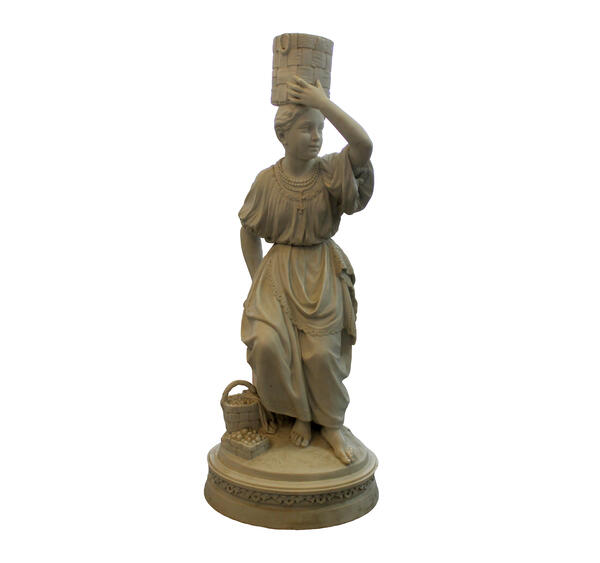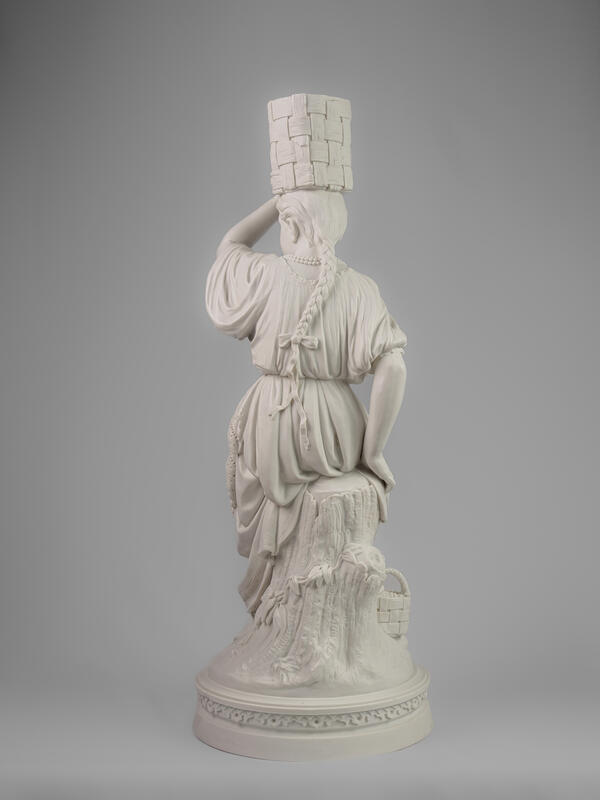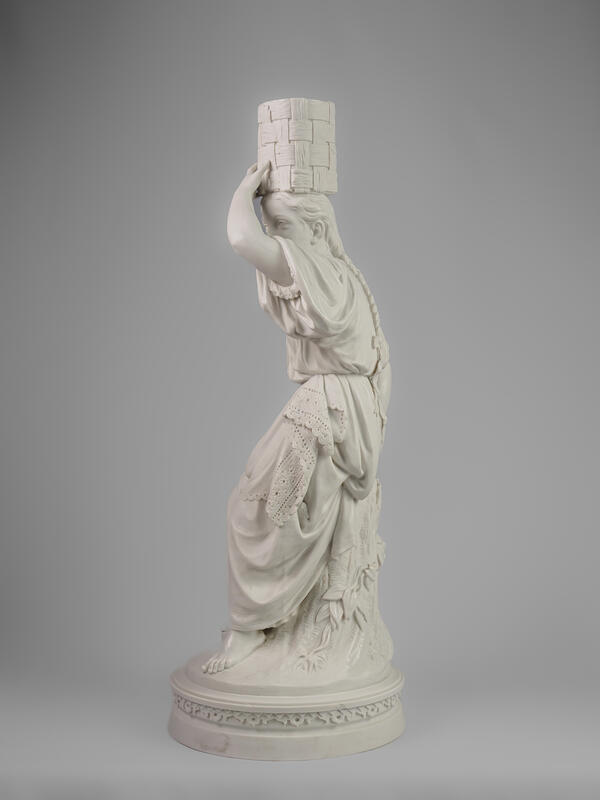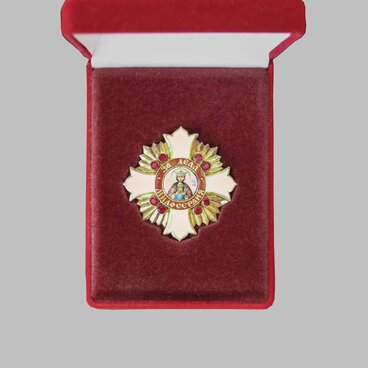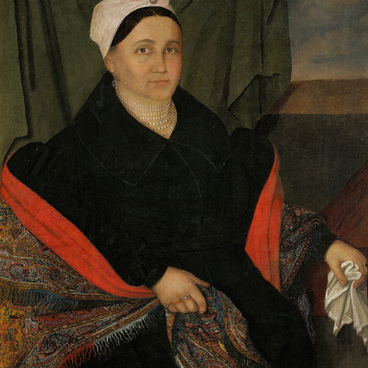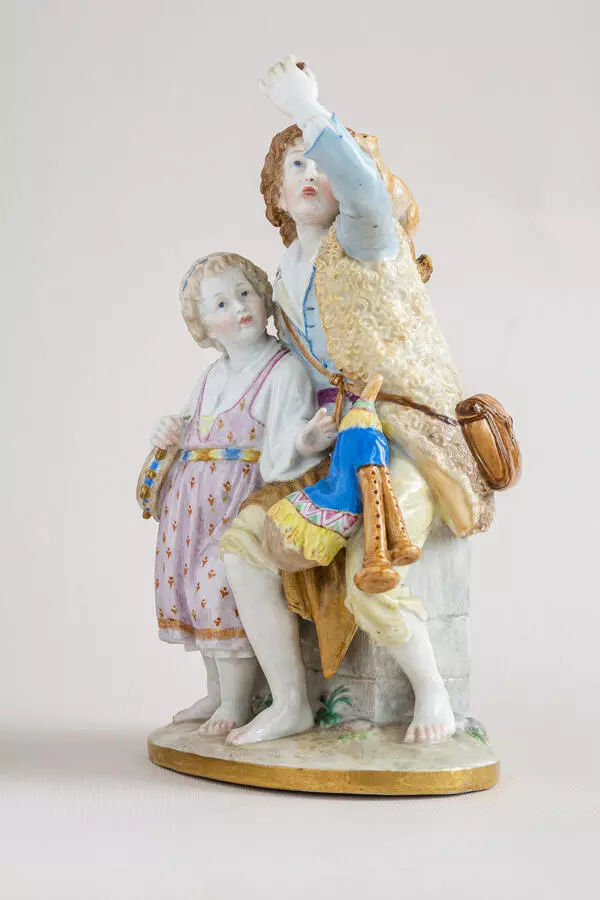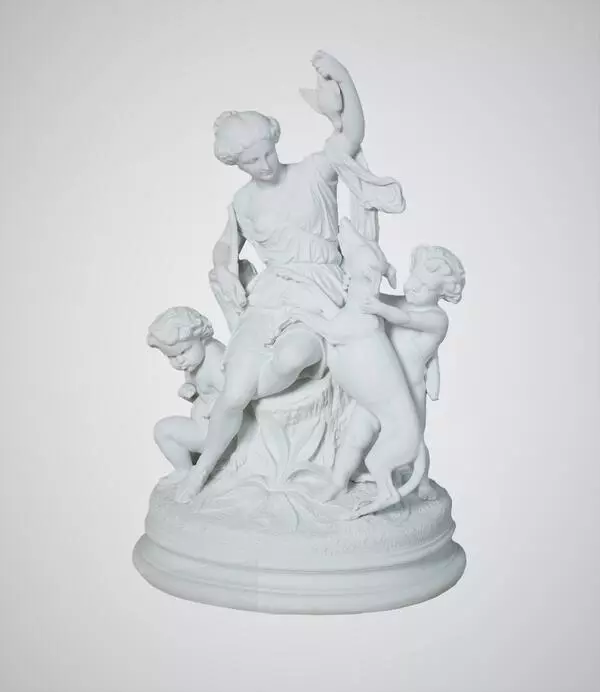The sculpture “Peasant Woman” from the collection of the Uglich Museum was created at the Imperial Porcelain Factory in St. Petersburg based on a model of the artist August Spiess. The figure of a peasant girl is a so-called “biscuit”, a product made of white porcelain mass, not covered with a shiny layer of lead glaze. But, as was often the case with models of August Spiess, another version was also produced — that was painted and glazed — which, of course, made the work look more elegant and attractive, but at the same time somehow less “sculptural”.
The sculptor August Karl Spiess (1817–1904) graduated from the Berlin Academy of Fine Arts. In 1846, he was invited to St. Petersburg to participate in the decoration of the halls of the Winter Palace after a fire. In 1849, Spiess joined the Imperial Porcelain Factory as a sculptor, and from 1853 he worked at the factory as a model designer. He designed most of the sculptural models made at the factory over his nearly 50-year-long work there.
The designer’s models are diverse: large clocks, decorative vases, miniature items — porcelain “zoos”, copies of Meissen and Sevres compositions of the 18th century. Some experts argue that in the 19th century Spiess became the first porcelain sculptor who began to bring the minor forms closer to great art. The tastes of the time, the spirit of the “official nationality” — all this found expression in the nature of the orders of the imperial court. Decorative sculpture was almost entirely related to the content of the order and was mostly eclectic in nature. Easel sculpture, on the other hand, developed relatively freely at the time, allowing the sculptors to show their skills, their attitude to reality and understanding of the image of man and progress.
The principal customer of August Spiess was his compatriot, Empress Maria Alexandrovna, née Princess of Hesse and by Rhine. This “woman of great intelligence and complex nature, ” as her contemporaries spoke of her, also had great artistic taste. By Christmas 1864, the Imperial Factory had supplied 119 figurines (Little Russians, Roma, bacchantes, and a marquis) to the Court. Among them were, most likely, the paired figurines of young peasants presented in the museum, seen by the sculptor as if through the prism of classical art. In fact, the museum’s collection has both sculptures, but the twin item got into the museum in a damaged condition and had to be restored.
The sculptor August Karl Spiess (1817–1904) graduated from the Berlin Academy of Fine Arts. In 1846, he was invited to St. Petersburg to participate in the decoration of the halls of the Winter Palace after a fire. In 1849, Spiess joined the Imperial Porcelain Factory as a sculptor, and from 1853 he worked at the factory as a model designer. He designed most of the sculptural models made at the factory over his nearly 50-year-long work there.
The designer’s models are diverse: large clocks, decorative vases, miniature items — porcelain “zoos”, copies of Meissen and Sevres compositions of the 18th century. Some experts argue that in the 19th century Spiess became the first porcelain sculptor who began to bring the minor forms closer to great art. The tastes of the time, the spirit of the “official nationality” — all this found expression in the nature of the orders of the imperial court. Decorative sculpture was almost entirely related to the content of the order and was mostly eclectic in nature. Easel sculpture, on the other hand, developed relatively freely at the time, allowing the sculptors to show their skills, their attitude to reality and understanding of the image of man and progress.
The principal customer of August Spiess was his compatriot, Empress Maria Alexandrovna, née Princess of Hesse and by Rhine. This “woman of great intelligence and complex nature, ” as her contemporaries spoke of her, also had great artistic taste. By Christmas 1864, the Imperial Factory had supplied 119 figurines (Little Russians, Roma, bacchantes, and a marquis) to the Court. Among them were, most likely, the paired figurines of young peasants presented in the museum, seen by the sculptor as if through the prism of classical art. In fact, the museum’s collection has both sculptures, but the twin item got into the museum in a damaged condition and had to be restored.

